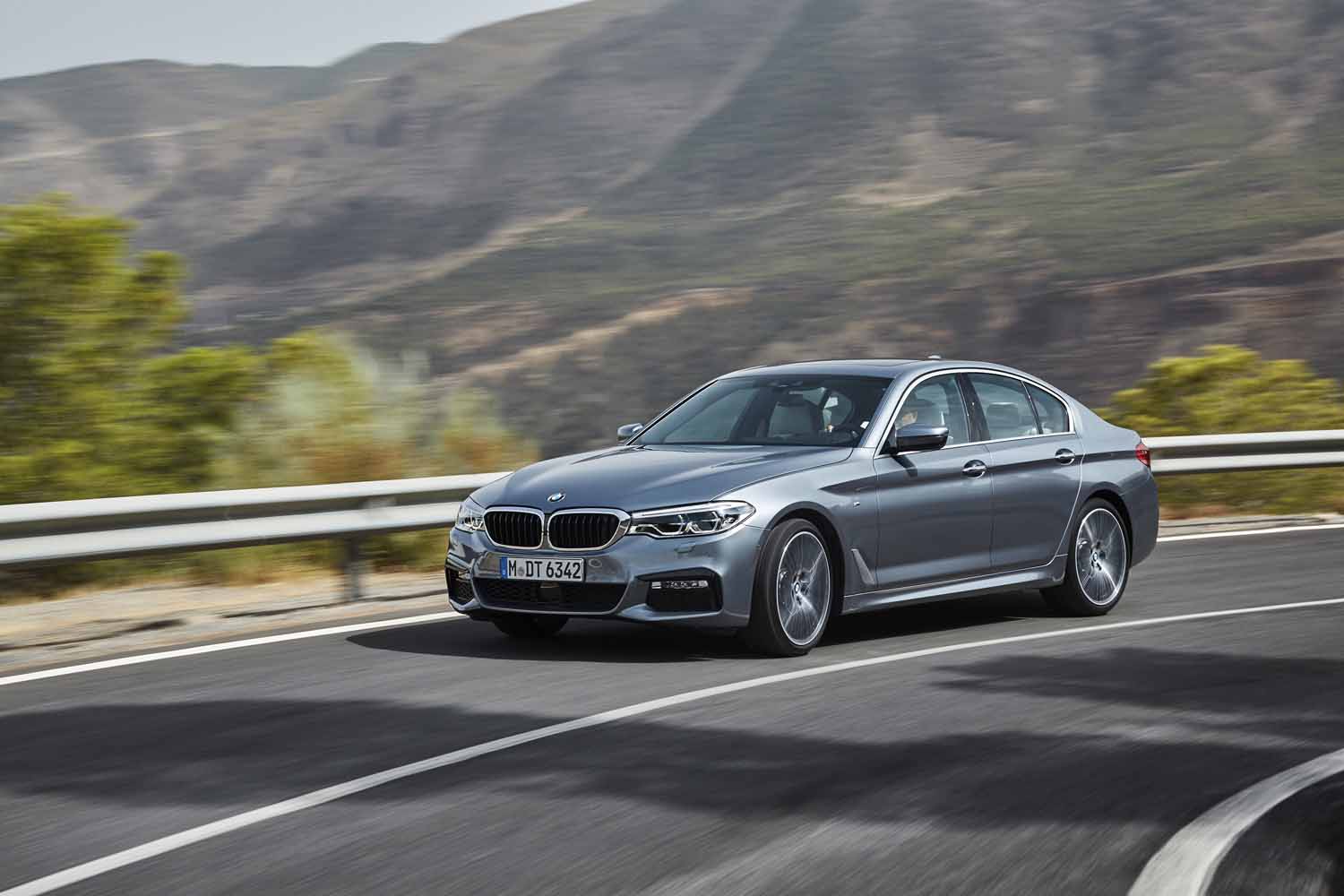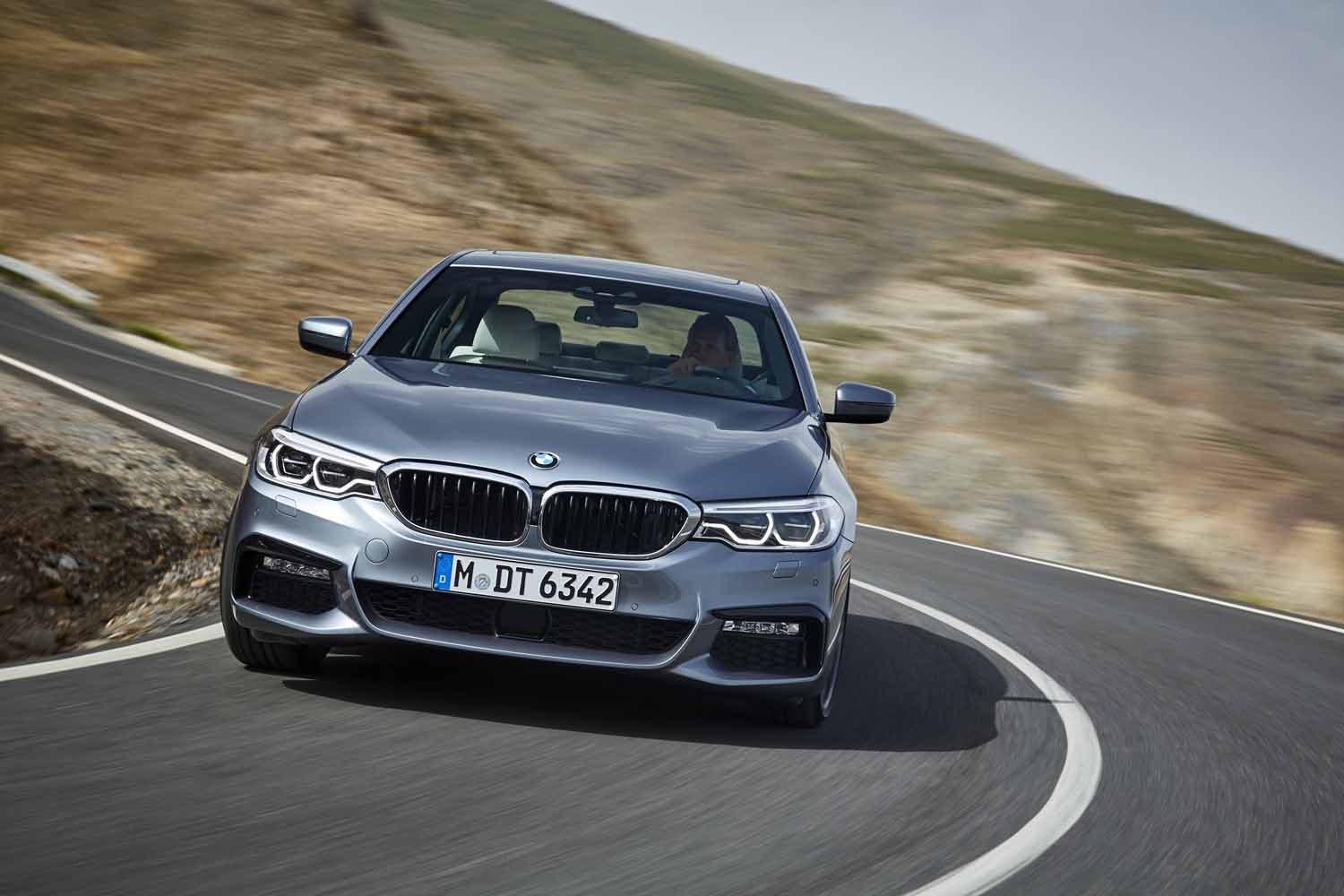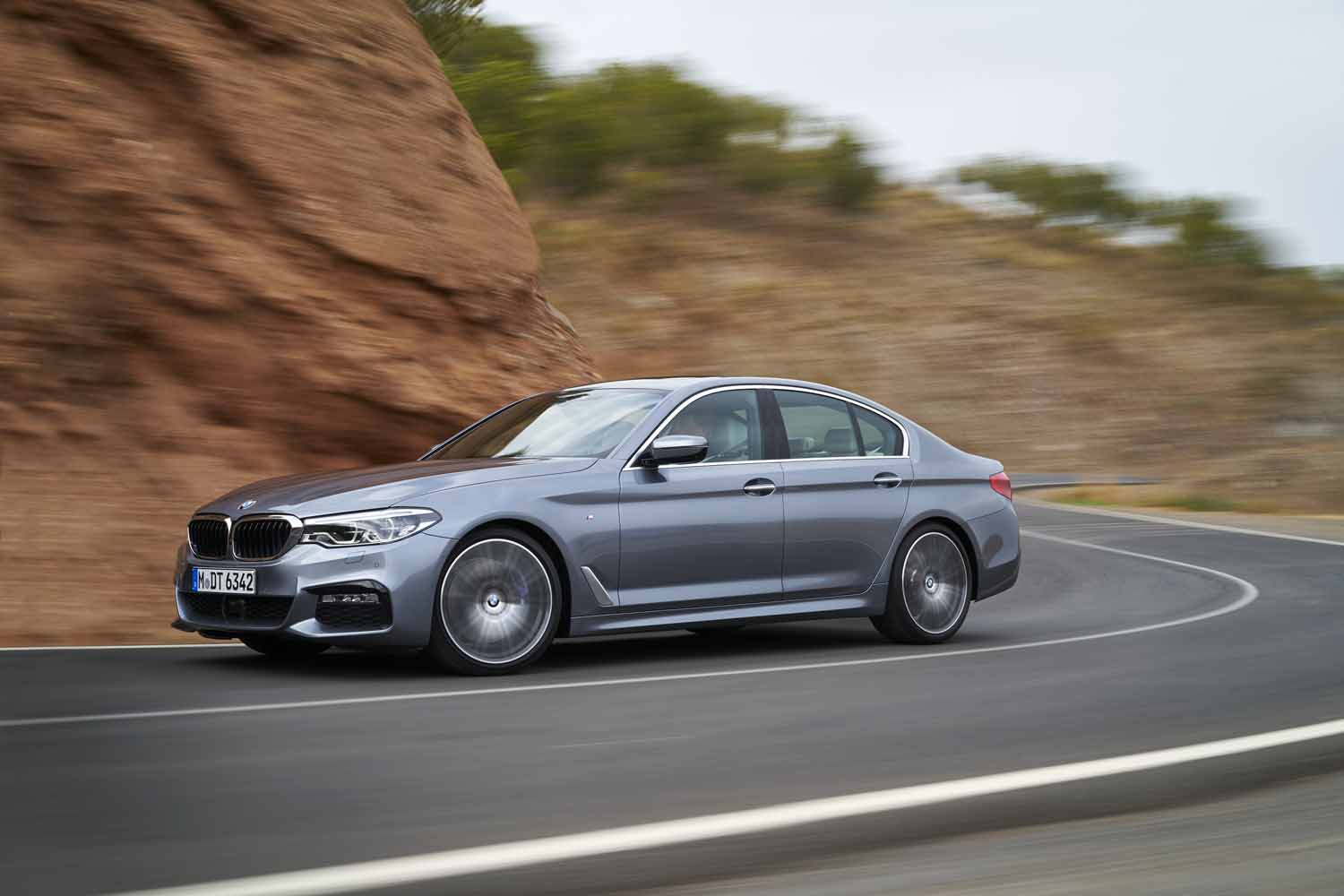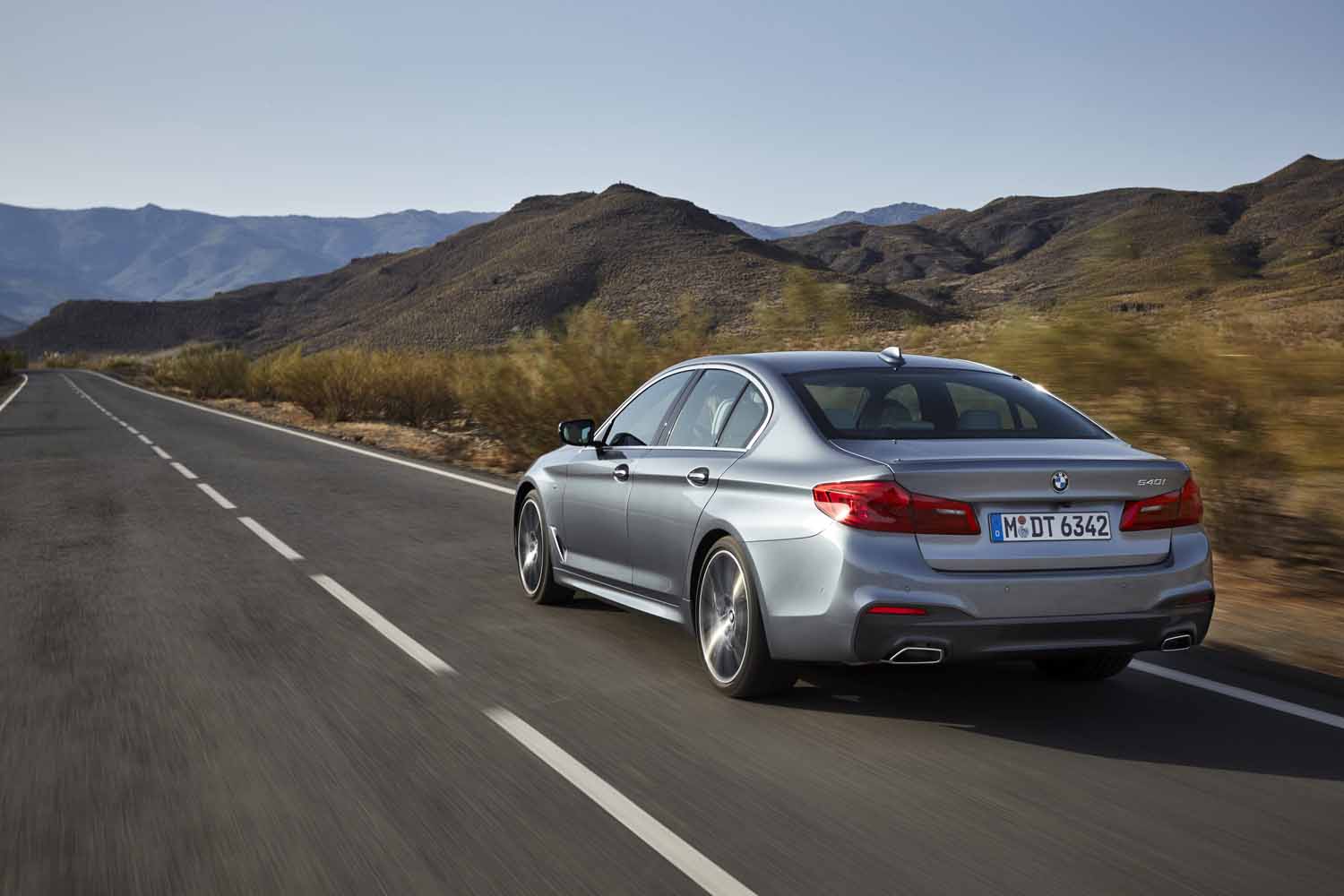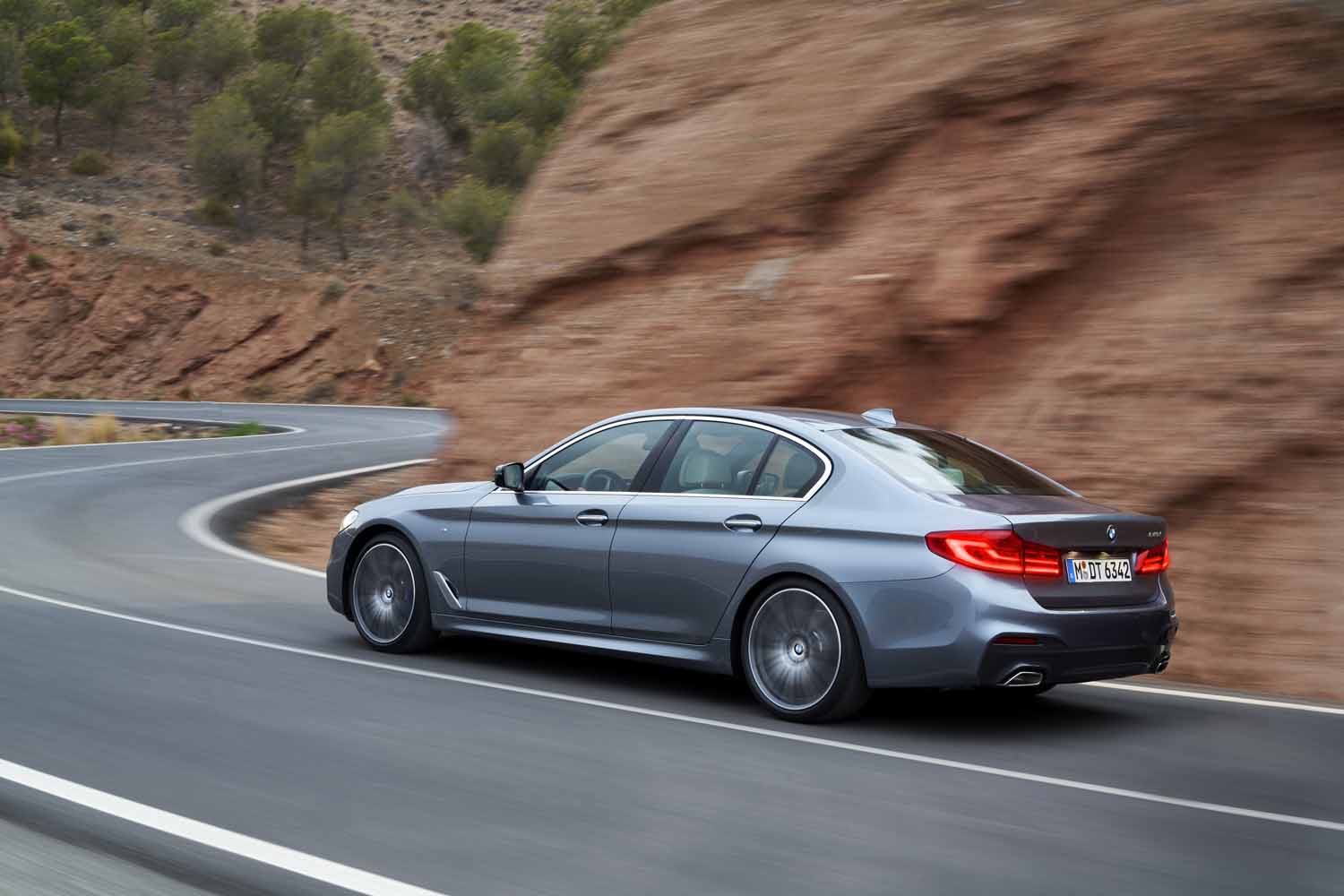BMW has lifted the veil off of the brand new seventh-generation 5 Series.
The next 5 Series’ design is undeniably more evolutionary than revolutionary. Few will be surprised to find out that its front end features a wide, chrome-framed kidney grille and a pair of elongated headlights, styling cues that also define the smaller 3 and the bigger 7. The changes are even more discreet out back, though BMW says it has tweaked the rear end to give the 5 a visually lower center of gravity.
The overall silhouette doesn’t change much, and BMW points out the car is only slightly bigger than its predecessor in all directions. It’s up to 137 pounds lighter, however, thanks to the widespread use of lightweight materials such as high-strength steel, aluminum, and magnesium.
At first glance, the dashboard’s layout is strikingly similar to the outgoing model’s. One of the most notable changes is that the new 5 is available with a configurable digital instrument cluster, a first in the nameplate’s decades-long history. The driver-oriented center console and the horizontal infotainment screen mounted on top of the dash remain. The cabin is more spacious than before, and the 5 now boasts 18.7 cubic feet of trunk space.
BMW is synonymous with technology, and the 5 Series is no exception. Notably, buyers can pay extra for the gesture-controlled infotainment system that made its debut last year in the 7 Series. Passengers who don’t like the idea of waving at a screen can navigate the menus with voice commands, the iDrive controller, or by simply touching the 10.2-inch screen.
At launch, the lineup will be broken down into two different models, the 530i and 540i. The 530i uses a 2.0-liter four-cylinder engine that’s both turbocharged and direct-injected. The four generates 248 horsepower between 5,200 and 6,500 rpm and 258 pound-feet of torque over a broad band that stretches from 1,450 to 4,800 rpm.
Moving up, the 540i is powered by a turbocharged 3.0-liter straight-six rated at 335 horsepower between 5,500 and 6,500 rpm and 332 pound-feet of torque from 1,380 to 5,200 rpm. Rear-wheel drive and an automatic transmission come standard regardless of which engine is chosen, and BMW’s xDrive all-wheel drive system is offered at an extra cost.
The 530i hits 60 mph from a stop in 6 seconds flat, and selecting rear-wheel drive lowers that figure slightly to 5.8 seconds. Those times drop to 4.9 and 4.7 seconds, respectively, for the 540i. Several turbodiesel engines will be offered in Europe but it’s too early to tell whether or not we’ll get them here. However, a plug-in hybrid model, the 530e, and a sportier variant dubbed the M550i will join the lineup a little later into the production run, and rumors indicate the next M5 will land with more than 600 horses and all-wheel drive.
The list of standard features includes adaptive cruise control, which functions from 19 to 130 mph. The system is capable of bringing the 5 to a full stop if needed, and it senses when the car ahead begins to move. BMW points out the technology is programmed to monitor two vehicles ahead in order to accelerate and brake smoother. It’s equipped with a heating element that ensures the software works even in the snow.
Adaptive cruise control is just one of the numerous driving aids available on the new 5. The list includes lane-keeping assist, traffic jam assist, remote parking, 3D surround view, and evasion aid, which helps the driver safely make emergency maneuvers at speeds of up to 100 mph.
The 2017 BMW 5 Series will go on sale nationwide in February. Pricing information will be announced in the weeks leading up to its on-sale date.
